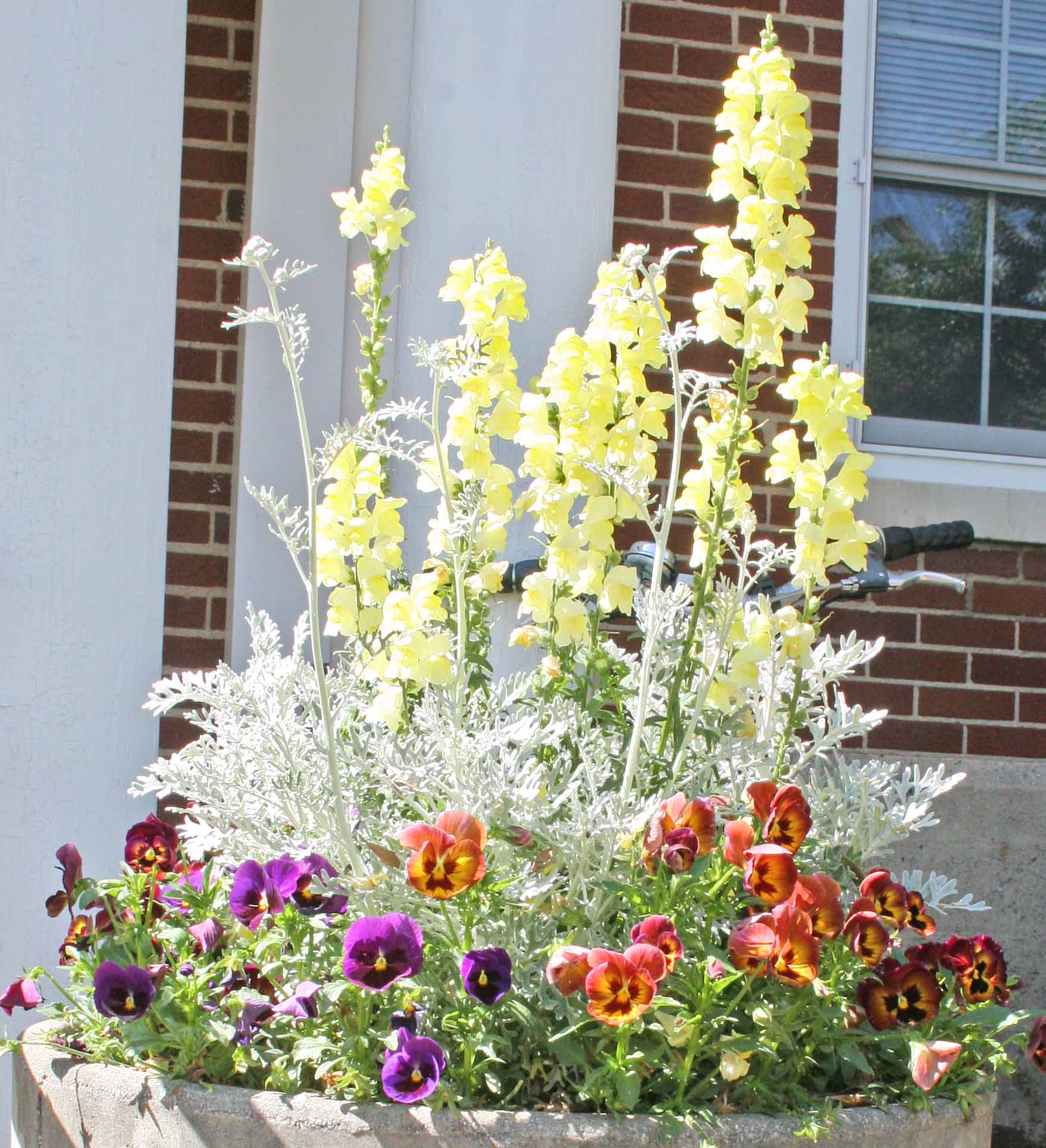Every year Americans spend about $2 billion dollars on fresh flowers for Mother’s Day. While fresh flowers are gorgeous, they have a short shelf life — often less than 10 days after purchase.
This year, why not skip the bouquet, and make mom a living collection of flowers and plants that may last for years?
Matthew Chappell, a horticulturist in the University of Georgia College of Agricultural and Environmental Sciences, recently published a how-to brochure for creating the perfect, one-pot container garden.
Filled with woody perennials like shrubs and accented with colorful vines and annuals, these self-contained gardens can add color and texture to any corner of the home and can be maintained with little work.
“The important thing to remember when creating a container garden is that you can both show your personal creativity and showcase your mother’s favorite flowers — be it a small tree like a Japanese maple, a variety of edible plants she can use to cook for you or a particular color theme she loves, ” Chappell said.
It’s important, when planning a container garden as a gift, to not only make your container garden aesthetically pleasing but also to set your gift- getter up for success, Chappell said. Nobody wants a container garden that’s stressful to maintain, or that they have to feel guilty about killing.
Here are a few tips for container garden composition and survival:
Theme: There’s a tremendous diversity of plants out there. It can be easy to end up with a jumbled mess of a container garden if you don’t start out with a plan. Themes can be as loose as Southern forest staples, with small conifers, hostas, small woody ferns and flowering vines or as concrete as a pizza garden — featuring basil plants, tomatoes and small pepper plants.
Variety: Now that you have your theme, think of plants of different heights, colors and textures that fit within your theme. Many successful containers start with a taller, woody perennial — to give the container weight and height — surrounded by colorful annuals or perennials. Avoid putting too many plants with feathery or needle-like leaves together because this can lead to a fuzzy, messy-looking container.
Compatibility: While variety in color and shape will help create an interesting container garden, plants need to have similar water and sunlight requirements if the garden as a whole is going to survive. Avoid mixing shade-loving plants with plants that need full sun, or mixing cacti with lush shade and moisture loving plants like hostas.
Growth rates: Plants that are grown together in the same container also need to have similar growth habits. If you use one vigorously growing plant in the same pot as a slower growing plant, the faster growing plant may end up taking over and choking out its container-mates.
If a fast-growing variety is essential to your composition, plant it in its own plastic pot, and then plant that pot in the larger container. This will keep the roots from taking over the garden.
Spacing: Whether they are slow growers or fast growers, you can expect your plants to continue to get taller and to spread out as time goes on. You don’t want the plants to become crowded. The best practice is to fill your container two-thirds of the way with plants to give everybody room to grow.
Irrigation: The most important part of maintaining any container is keeping it properly watered. Newly planted containers need to be watered once every two to five days. Well-established containers, ones that have grown for a few months, will have to be watered daily during the spring and summer, and about once a week during the late fall and winter.
Only water the container until water starts to drain from the bottom of the pot. Any additional water will just be wasted.
Fertilization: The best way to fertilize container gardens is to use slow release fertilizers and apply them once or twice a year, depending on the instructions. Planters should avoid fertilizing their container gardens after August because fertilization can spur new growth and that growth could be damaged by any early cold weather.
For more details on building a successful, one-container garden and for suggestions on plant combinations visit www.caes.uga.edu/publications and find publication B 1418 “Success with Mixed Containers Using Perennial and Woody Plants.”







